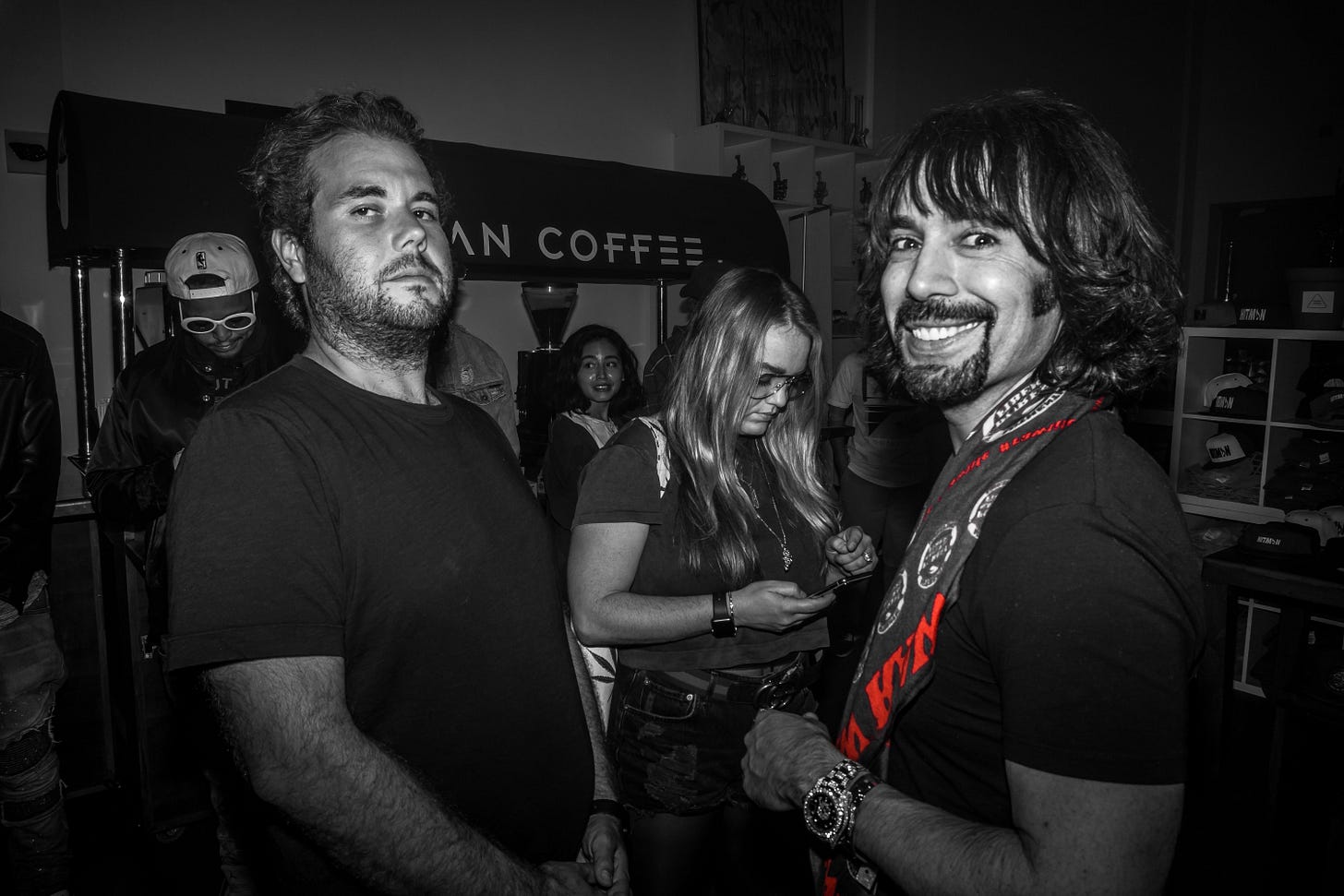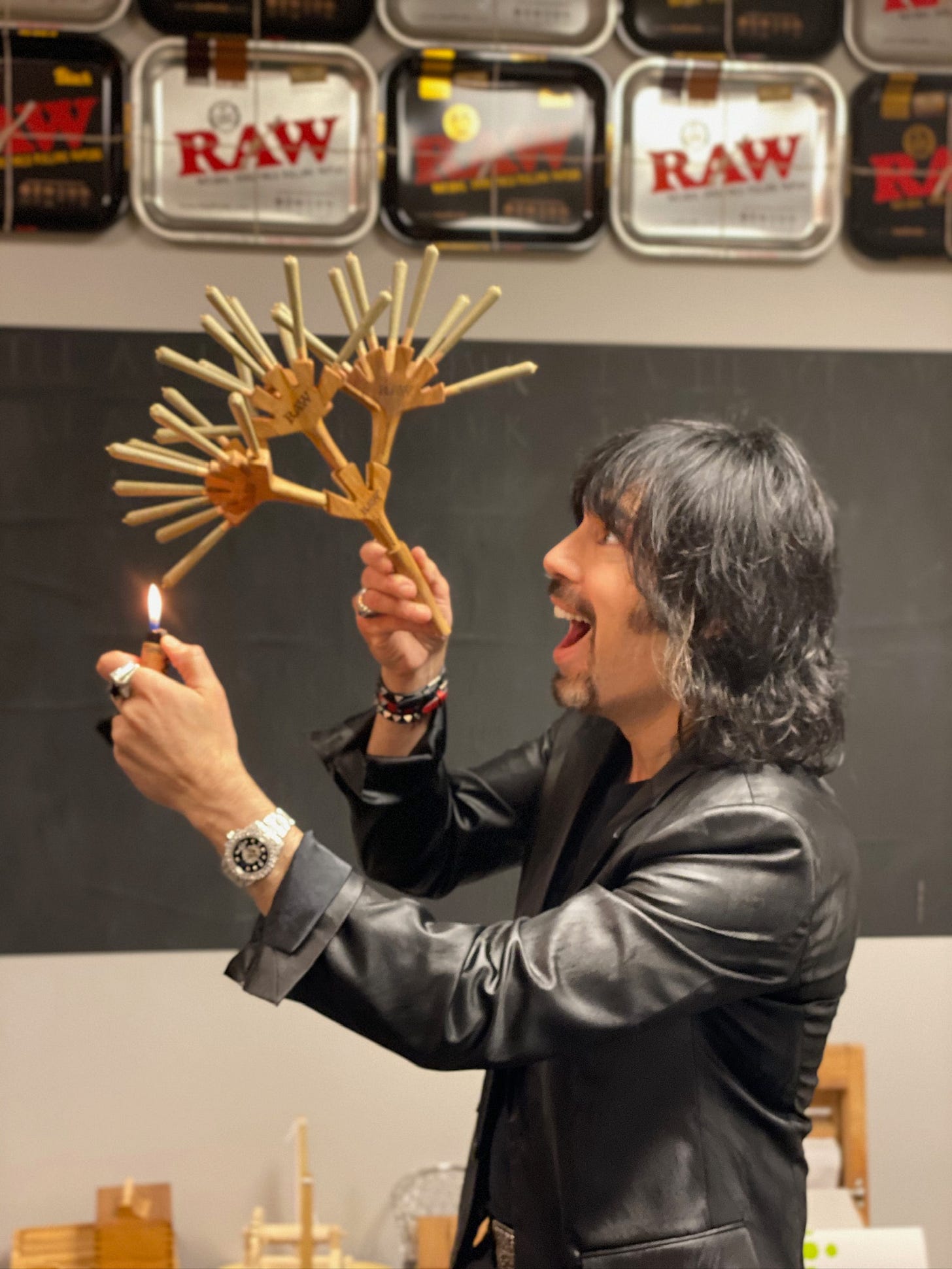High Times Magazine Has a New Owner. Now What?
After a half-century of ups and downs, things are looking decidedly up with today's news that the founder of Raw Rolling Papers has snapped up the mag's assets for a cool $3.5 million.

News broke this morning that High Times magazine, the 51-year-old, once-storied bible of cannabis culture has a new lease on life. Its savior? Entrepreneur and Raw Rolling Papers founder Josh Kesselman who plunked down $3.5 million in cold, hard cash to purchase the legacy media publication’s assets.
Acccording to this morning’s announcement, Kesselman is partnering with Matt Stang, a former co-owner and 2000’s-era editor of the publication to relaunch it“as a comprehensive platform serving as a hub for information and connection, mixing legacy with modern relevance.”
But what does that mean, exactly? I’m hoping to ask Kesselman a few burning questions on that very topic. But, until I get a chance to find out where the brand is going (I’ve made my ask!), here’s a (very brief) timeline recap of its half-century of ups and downs:
1974 — High Times is founded by journalist, cannabis activist and drug-runner (now there’s a combo!) Tom Forçade, who, among other things, pioneered the pie-in-the-face as political protest. (Former HT editor David Bienenstock did a fantastic deep dive into Forçade’s life in a 2019 two-part episode of his Great Moments in Weed History podcast.
1978 — Forçade commits suicide in New York at the age of 33. He bequeaths trusts to benefit High Times and NORML (the National Organization for the Reform of Marijuana Laws).
1987 — Circulation is reported at 500,000 per issue.
1988 — The magazine moves into events with its first Cannabis Cup awards ceremony, introducing what would become a popular — and lucrative extension of the brand.
2003 — A new publisher tries to repostion HT as a high-brow literary magazine and dial down the cannabis content. According to former editor-in-chief Malcolm MacKinnon (quoted in this Slate story) the publication “lost a third of the circulation in nine months.” By the following year, the focus was predictably back on cannabis and counterculture.
2016 — Longtime general counsel and chairman of the board Michael Kennedy, involved with the magazine since its inception (he was Forçade’s attorney), dies.
2017 — After 43 years in New York City, the magazine pulls up stakes and heads west to Los Angeles where recreational cannabis had been legalized at the ballot box by California voters just months earlier.
A few months later, the magazine (valued at $70 million) changes hands when a majority stake sells for $42 million. The new owner is a group of investors led by Los Angeles-based private equity firm Oreva Capital. Adam Levin becomes CEO.
At this time the company claims 236,000 print subscribers and a digital audience of more than 20 million unique visitors each month.
Levin tries to get the company listed on NASDAQ by pursuing a merger with a special acquistion company called Origo.
2018 — When that fails to materialize, Levin decides to offer $11 shares directly to investors (aka fans, readers, supportive weedheads) via a mini-IPO and files paperwork with the Securities and Exchange Commission to do just that.
2020 — The SEC tells the company it must stop accepting investments in its mini-IPO because it has failed to meet an extended deadline to file its audited annual report.
2023 — The SEC issues a cease-and-desist order against HightimesHolding Corp.
2024 — In May the company enters receivership. At that time, it reports having 8,419 paid print subscribers and 10,325 paid digital subscribers.
In December, Levin is charged in federal court on charges related to the stock offering.
2025 — The U.S. Attorney’s Office for the Central District of California announces in January that Levin has “agreed to plead guilty to joining a criminal conspiracy to pay more than $150,000 in undisclosed compensation to an analyst for an investment newsletter that touted its stock.”
In June 2025, the news the weed world (including this longtime cannabis writer who cut his teeth on the publication back in the 1980s) has been waiting for: High Times’ assets, including the magazine’s extensive archive and Cannabis Cup event series, are back in the news — in a good way.
According to the announcement, the first revamped Cannabis Cup event “with third-party judging and zero pay-to-play involvement” notes the release) is slated for early 2026.
There’s no stated timetable for the return of the print magazine — or the website (which as of this writing hasn’t been updated — beyond posting today’s news — since late 2024) — but the release says the print version will eventually return in “limited-run, collectible editions.” It also says plans are afoot to “[Rebuild] the digital platform to host a curated network of cannabis podcasts, experts and community voices.” (I like the sound of that!)

I haven’t met Kesselman yet (though I have crosseds paths with Stang a few times back when the magazine had just moved to L.A. and was located just down the street from me on Wilshire Boulevard) but from the photos — and what’s said about his recent acquisition — he seems like he might have exactly the kind of upbeat energy to put High Times back in its rightful place as the voice of the cannabis community.
“This is a ‘pinch yourself’ kind of moment for me, just unbelievable,” Kesselman says in the announcement. “Eighteen-year-old stoner Josh would be in complete disbelief that I get to bring back a piece of history that has played such an important part in culture and impacted so many lives, including my own. This feels like a dream.”
And here’s a fun fact that’s either wholly random or some serependitious sign from ther ganja gods above: Kesselman’s rolling paper company happens to be headquartered in Phoenix, Arizona. Which is where High Times founder Tom Forçade was born back in 1945.






You and me both! There is sooooooo much potential here.
I cannot wait to see this back!